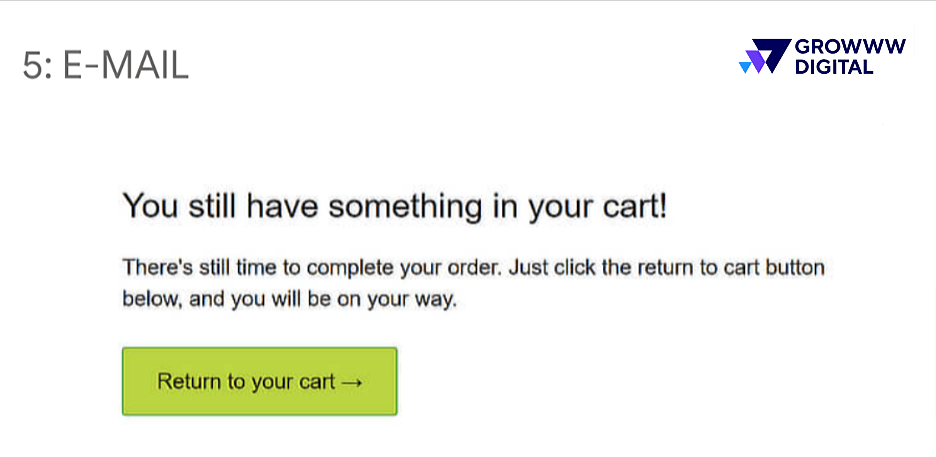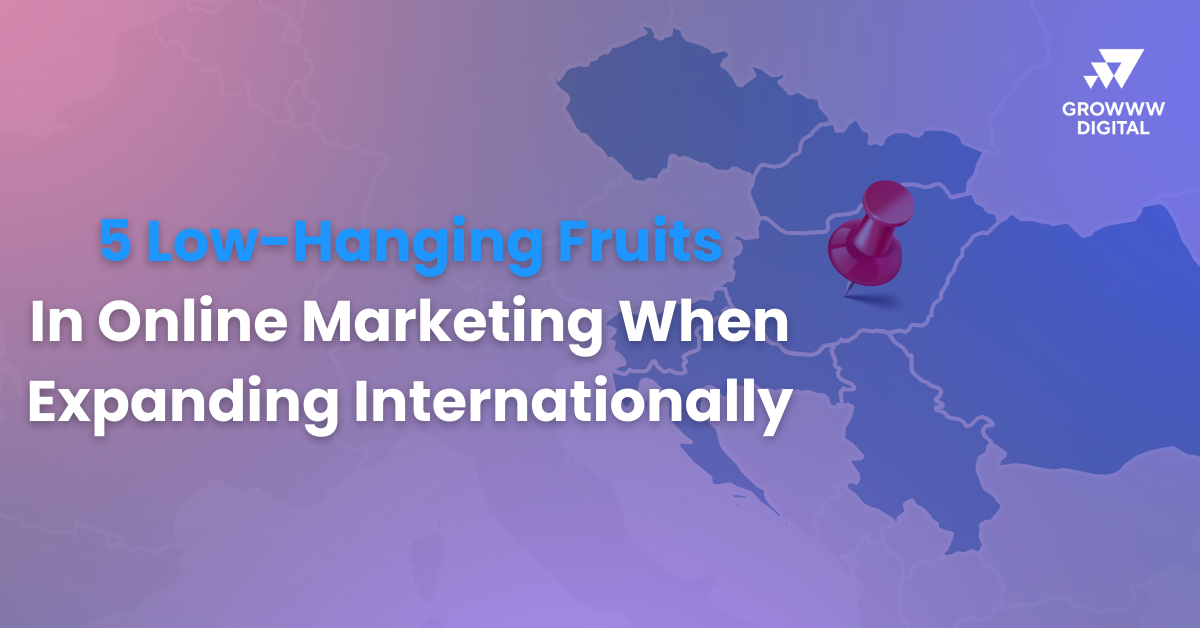
5 Low-Hanging Fruits In Online Marketing When Expanding Internationally
5 Low-Hanging Fruits In Online Marketing When
Expanding Internationally
In today’s complicated times, growth is more and more difficult, especially in markets where the given company has been operating for years and all the low-hanging fruits are picked, especially in online marketing.
The solution can be expansion to other countries, i.e. online export. It is important to realise that export cannot be a goal, it is a strategy to achieve business goals, which are most often centred around turnover or profit growth.
In the case of entering a new market, it is very important to have a great team, to be careful about the specifics of the market both from a legal and cultural perspective. In Hungary the rules/restrictions change quite intensively (e.g. it’s been the case with solar panels throughout last year).
In terms of culture, not everything that is funny to a Slovak, Pole or Romanian will be funny or understandable to a Hungarian, and even the phrases differ. ‘Iné kafé’ (different coffee) in Hungarian has no meaning, the expression ‘iné cestoviny’ (different dough) is used instead.
When entering a foreign market, it’s also important to consider differences in accounting and taxes. For example, VAT is 27% in Hungary, the highest in the CEE region.
Online marketing specialists who have worked in ecommerce for the past few years clearly see that the entire environment is changing radically.
Just as global prices for products and services are rising, so too are CPCs (costs per click in systems like Google Ads, Meta, TikTok etc.) and the way of measuring effectiveness is changing as well.
The transition from Google Analytics 3 (Universal Analytics) to GA4 also brings a multitude of challenges, and the entry of Chinese mega-merchants like Temu is also drastically affecting the European market.
For a company to stay on its feet, a well-thought-out, quality strategy is necessary. For market penetration, there are still a number of low-hanging fruits to be picked. Let’s see some of these!
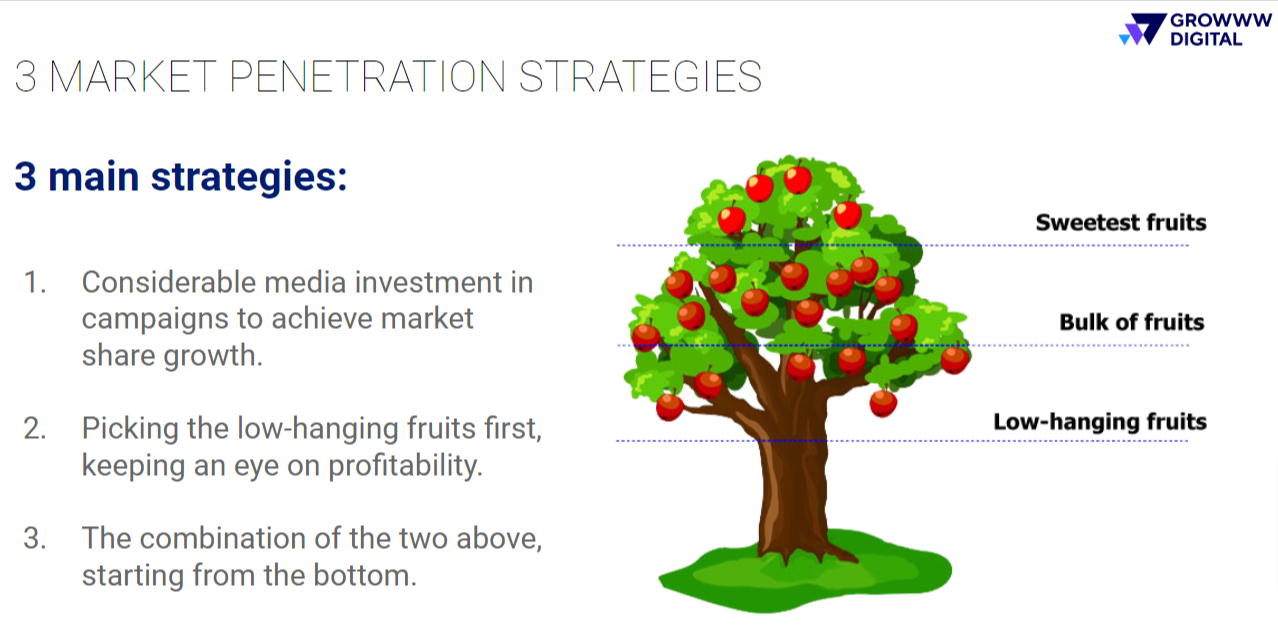
Want to expand in the region? Download Your Free Ultimate CEE Ecommerce Export Guide!
75 pages packed with all you need to know as an ecommerce business before you expand to Czechia, Slovakia, Hungary, Romania, Croatia and Slovenia.
1. Google Shopping + Google Ads Search advertisement
The easiest way to enter a new market is by using only Shopping (or Performance Max) campaigns, for which we only need a feed (a spreadsheet with information and images about products).
We can go one step higher if we use localised text ads (if we use Pmax campaigns for Shopping, it is important right from the start). If there are thousands or tens of thousands of products, then manual work is not realistic.
The automation of text ads can save a great deal of working hours. For example, with the help of Growww Digital’s ROIminer solution, you can create entire campaigns for tens of thousands of products in a few hours.
For Shopping and Pmax campaigns, the use of a CSS licence is very useful because of the approximately 20% discount on the cost of clicks (CPC) compared to Google’s native Shopping Ads costs.
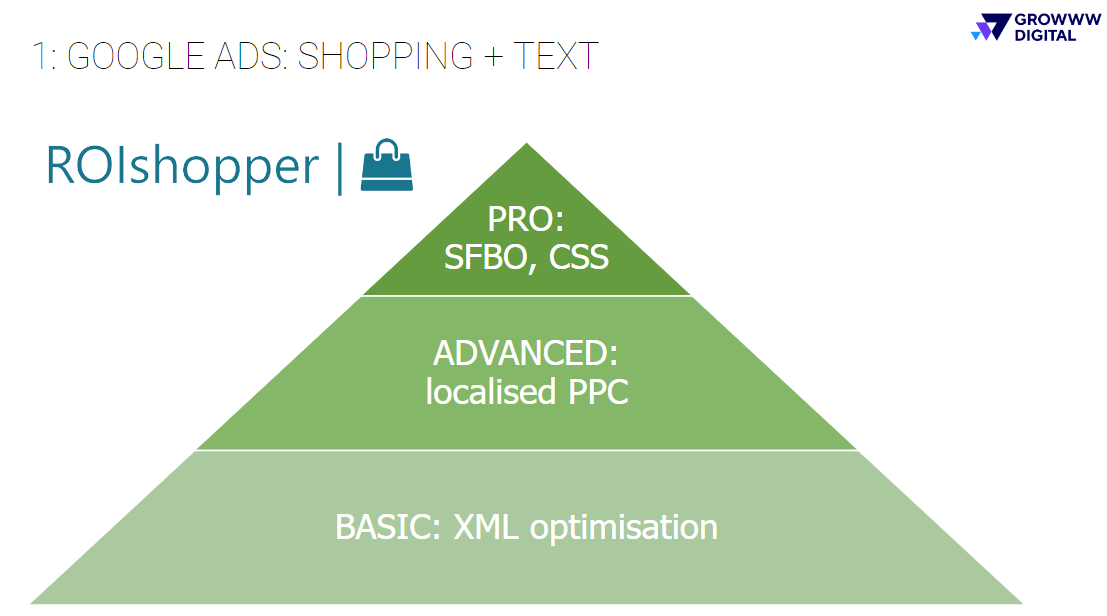
2. Price comparison sites
The biggest player in the CEE region is Heureka Group, whose price comparison tools are used by the majority of e-shops.
The challenge here is that often only a feed is uploaded and no optimisation takes place. Yet, there is the possibility for it, most effectively through bidding solutions, such as Beed.
Here, it is possible to use various rules to highlight or hide any categories or group of products and thus distribute the budget much more optimally than when left to the comparison system’s algorithm.
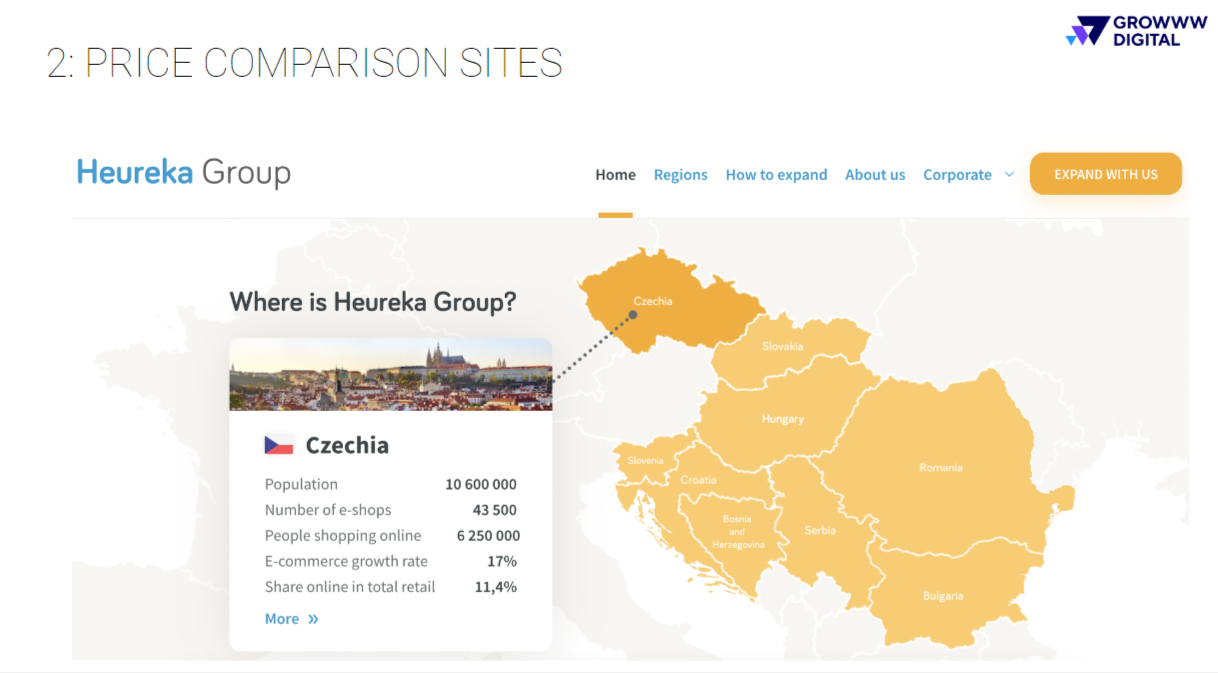
3. Programmatic and affiliate
Programmatic banner and video advertising are critical especially for branding and for the See + Think phases (in the See-Think-Do-Care digital marketing framework), when potential clients are considering options in their minds. It is here that we can most easily attract them.
Affiliate marketing, on the other hand, can help us gain awareness and also increase sales through larger and more well-known ecommerce stores or marketplaces, such as Alza, Mall, etc.

4. Facebook – New customers
Here we have the option to target based on demographic and localization settings, but it is much more effective if a database of existing clients is uploaded to the system. Then the targeting will be more precise and can achieve better results, leading to lower CPA (Cost Per Acquisition) and higher profit.
Based on the aforementioned database, there is also the possibility to target a similar audience (Lookalike), meaning people who behave similarly on the internet as those who have already shopped with us. This means they visit similar websites, online stores, have similar hobbies etc.

5. Email
Through emails, you can inform potential customers about news and promotions. However, when it comes to the DO phase, that is, purchases, the most effective strategy is to use remarketing, which means targeting again.
In this case, a potential customer can receive an email informing them that something has remained in their cart and suggesting they complete the purchase while the promotion lasts, enabling them to get the product at a lower price.
All in all, online export is not rocket science.
It’s necessary to start working on it, prepare a strategy, set goals, and put in the effort. If there is no internal capacity or lack of knowledge, it is advisable to seek an agency that can help with this.
Want to expand in the region? Download Your Free Ultimate CEE Ecommerce Export Guide!
75 pages packed with all you need to know as an ecommerce business before you expand to Czechia, Slovakia, Hungary, Romania, Croatia and Slovenia.

